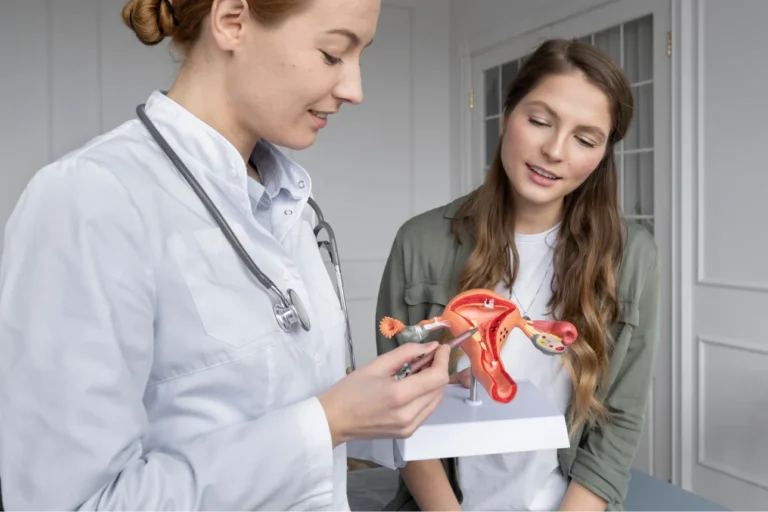Vaginoplasty is a surgical or non-surgical procedure designed to tighten the vagina’s muscles and tissues, helping to restore or enhance sexual satisfaction and confidence. Whether for medical or personal reasons, many women consider vaginoplasty to improve their quality of life and overall well-being. In this article, we’ll explore the different types of vaginoplasty, the reasons for undergoing the procedure, and what to expect before, during, and after the surgery.
Types of Vaginoplasty
There are two main types of vaginoplasty: surgical and non-surgical. The surgical procedure involves removing excess tissue and tightening the vaginal muscles, while the non-surgical option uses lasers or radiofrequency energy to stimulate collagen production and improve the vagina’s overall tone and texture.
The Surgical Vaginoplasty
The surgical vaginoplasty is a complex procedure that requires careful planning and preparation. Before undergoing the surgery, you will need to undergo a thorough physical exam and discuss your medical history and expectations with your surgeon. During the surgery, your surgeon will make incisions in the vaginal tissue, remove excess tissue, and tighten the muscles. Recovery time varies depending on the extent of the surgery, but most women can resume normal activities within a few weeks.
Non-Surgical Vaginoplasty
Non-surgical vaginoplasty is a less invasive option that uses laser or radiofrequency energy to stimulate collagen production and improve vaginal tone and texture. The procedure is quick and painless, with minimal recovery time. There are several types of non-surgical vaginoplasty, including vaginal rejuvenation and labiaplasty.
Reasons to Undergo Vaginoplasty
There are several reasons why women consider vaginoplasty. Some women undergo the procedure for medical reasons, such as to correct vaginal prolapse or urinary incontinence. Others choose to undergo the surgery for personal or sexual reasons, such as to improve sexual satisfaction or enhance their self-confidence.
Risks and Side Effects
As with any surgery, there are risks associated with vaginoplasty. Common side effects include pain, swelling, and bruising, while potential risks include infection, bleeding, and nerve damage.
Comparison for Surgical and Non-surgical Vaginoplasty

It’s important to note that both surgical and non-surgical options have their own advantages and disadvantages, and the best choice for you will depend on your specific needs and goals. It’s always recommended to consult with a qualified healthcare professional to determine the most appropriate course of treatment for your individual case.
Vaginoplasty at Aktif International
At Aktif International Hospital, we understand that vaginoplasty is a deeply personal decision that requires careful consideration and expert care. We use the latest surgical and non-surgical techniques to help women achieve their desired results safely and effectively.
FAQs
What is the ideal age to undergo vaginoplasty?
There is no ideal age for vaginoplasty. Women of any age who are in good health and have realistic expectations can consider the procedure.
How long does the procedure take?
The surgical procedure can take between one and two hours, while non-surgical options take less than an hour.
How much does vaginoplasty cost?
At Aktif International Hospital, we offer competitive pricing and financing options to make the procedure more accessible.
How soon can I have sex after the procedure?
It’s important to wait at least six weeks before engaging in sexual activity after undergoing vaginoplasty.
How long does the recovery period take?
It’s important to avoid strenuous activity and sexual intercourse for several weeks to ensure proper healing.
Is the procedure painful?
The level of pain experienced during and after the procedure varies from person to person. However, your surgeon will prescribe pain medication to help manage any discomfort.
What are the potential risks and complications of vaginoplasty?
The potential risks and complications of vaginoplasty include infection, bleeding, scarring, nerve damage, and pain during sexual intercourse. However, these risks are relatively rare, and your surgeon will take every precaution to minimize them.
Will my insurance cover the cost of vaginoplasty?
In most cases, insurance does not cover the cost of cosmetic or elective procedures like vaginoplasty. However, some insurance plans may cover the cost of the procedure if it’s medically necessary.
How long do the results of vaginoplasty last?
The results of vaginoplasty are long-lasting. However, factors like age, weight fluctuations, and childbirth can affect the outcome over time.
How do I choose the right surgeon for vaginoplasty?
When choosing a surgeon for vaginoplasty, it’s important to look for someone who is experienced, board-certified, and has a proven track record of success. You should also feel comfortable discussing your concerns and expectations with your surgeon and be confident in their ability to provide the care you need.
In conclusion, vaginoplasty is a safe and effective procedure that can help women achieve their desired results and improve their quality of life. Whether you’re considering surgical or non-surgical options, it’s important to choose a reputable hospital and experienced surgeon who can provide the care and support you need throughout the process. With proper planning and preparation, you can achieve the results you want and enjoy a healthier, more fulfilling life.

